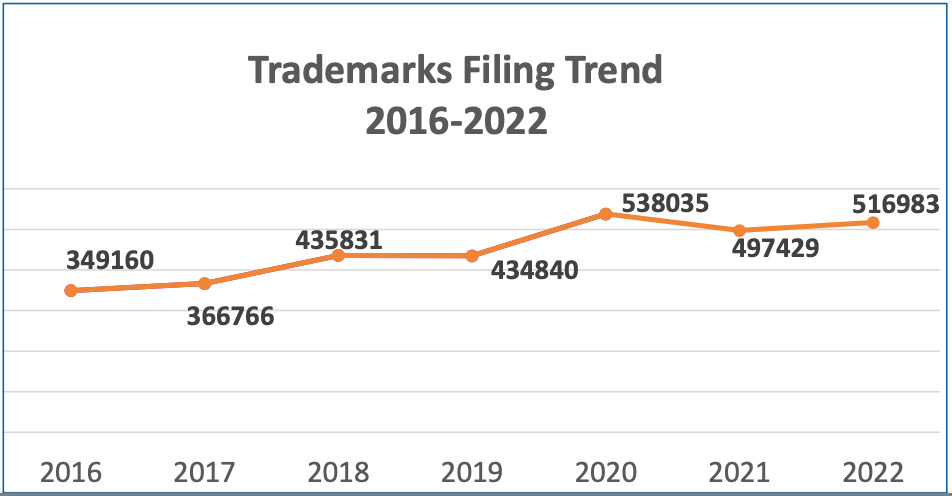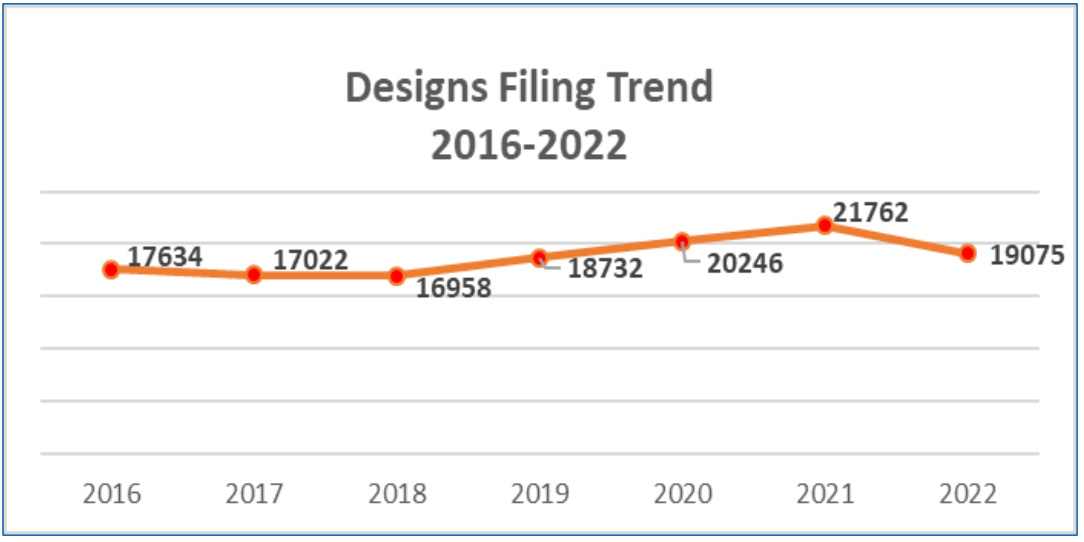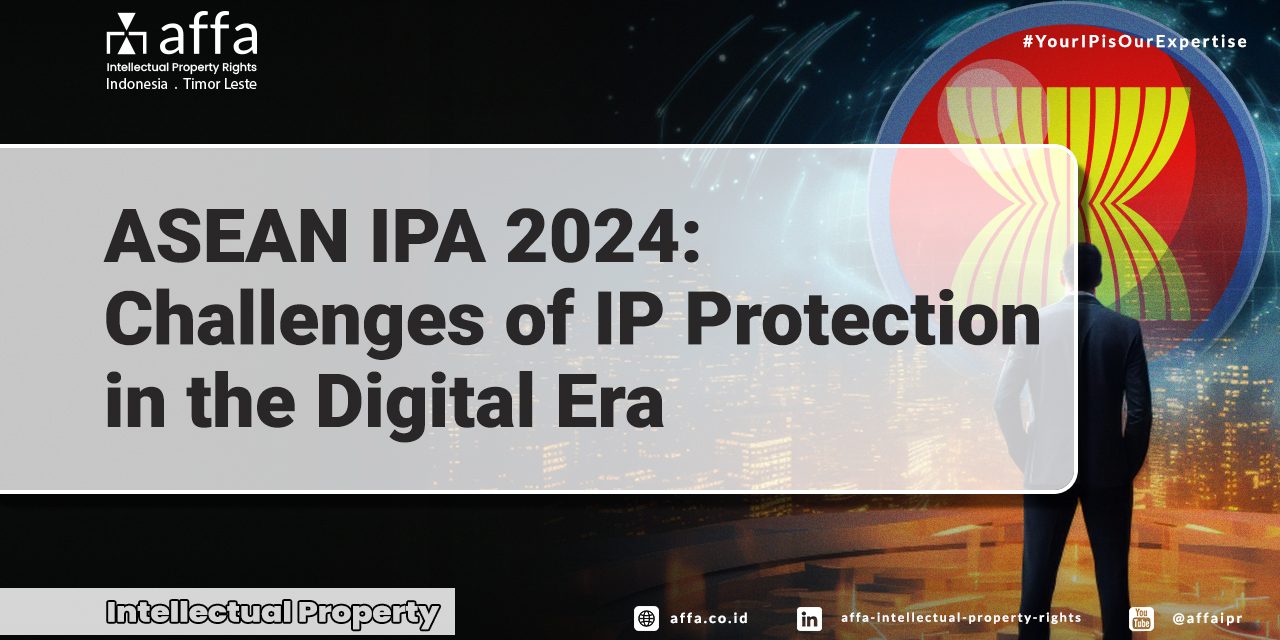The 2024 ASEAN Intellectual Property Association (IPA) Annual General Meeting & Conference took place successfully on March 1-2 in Jakarta, Indonesia. Held at the Mandarin Oriental – Hotel, this event provided new insight to Intellectual Property (IP) Southeast Asian stakeholders regarding the challenges faced in the digital era.
There was plenty of knowledge shared by competent speakers presented, including Bambang Brodjonegoro (Former Minister of Finance of the Republic of Indonesia), Thang Van Luong (Assistant Director of IPR Division of ASEAN), Kozo Takeuchi (President-Elect of APAA Headquarters, Japan), Peter Fowler (Senior Counsel for Enforcement, Office of Policy and International Affairs of USPTO – USA), Peter Sungjin Chun (Senior Vice President of APAA Korean Group – ROK), Jesse Zhang (AIPPI China Group), and Kukuh TW (Lecturer, Entrepreneur and IT Consultant ). For this reason, we will divide it into several articles, from the conditions and challenges facing ASEAN in the digital era to specific obstacles related to Artificial Intelligence (AI). Below is the summary:
The Growth of Intellectual Property in ASEAN
In 2022, the ASEAN economy grew 5.7% compared to the previous year, achieving a Gross Domestic Product (GDP) of USD 3.6 trillion and placing this region in the 3rd most prominent position in Asia or the 5th largest globally. With this performance, ASEAN succeeded in attracting Foreign Direct Investment (FDI) of USD 224.2 billion, most of which came from the United States (16.3%), Japan (11.9%), the European Union (10.7%), and China (6.9%). This investment is mainly aimed at the service sector at 68.3% and manufacturing at 27.5%.
ASEAN’s population is dominated by people under 30, making this region dynamic and challenging in the digital era. There were 460 million internet users in 2022, of which 80% were actively shopping online. The Gross Merchandise Value (GMV) contribution will reach USD 200 billion and is predicted to exceed USD 330 billion in 2025.
This change in lifestyle in the digital era makes the ASEAN region seem to have entered the Digital Decade, where the potential for the digital economy will reach USD 1 trillion GMV in 2030. However, this great potential will only be achieved with the right strategy and collaboration. This aligned strategy is essential, considering that ASEAN countries have quite a significant gap in the Global Innovation Index (GII) ranking released by the World Intellectual Property Organization (WIPO) in 2023.
Of the top 50 in the GII ranking, only Singapore (rank 5), Malaysia (30), Vietnam (40), Thailand (43), and the Philippines (50) are in the top 50. Meanwhile, half of the other ASEAN countries, such as Indonesia, Brunei, Cambodia, Myanmar, and Laos, still need to be higher. For this reason, a blueprint for the “ASEAN Economic Community 2025” has been created, prioritizing Intellectual Property cooperation with several strategic goals and indicators.
Cooperation on Strengthening Intellectual Property in the ASEAN Region
To strengthen this collaboration, the following Strategic Objectives have been prepared:
- Provide a firm basis for economic progress, support economic development, and produce wealth & prosperity.
- Promote trade & flow of investment; stimulate tech transfer & technological innovation; competitiveness.
- Expedite the realization of ASEA FTAs, and contribute to the growth of regional and global trade liberation.
- Contribute to regional dynamism, synergy & the enhancement of ASEAN solidarity.
Meanwhile, the Strategic Indicators are as follows:
- Strengthening IP offices and building IP infrastructure.
- Enhancing regional mechanisms to promote asset creation & commercialization.
- Developing regional IP platforms and infrastructure.
- Expanding the ASEAN IP ecosystem.
This strategic indicator has been planned since 2016 but is still being pursued to realize everything by 2025.
ASEAN Filing Trends 2016-2022
 Source: WIPO
Source: WIPO
 Source: WIPO
Source: WIPO
 Source: WIPO
Source: WIPO
Even though it is quite volatile, especially after the Covid-19 pandemic, overall, whether for Patents, Trademarks or Industrial Design, achievements in 2022 are among the highest in the last 6 (six) years.
Intellectual Property Opportunities in the Digital Economy
ASEAN has mapped several IP opportunities in the Digital Economy because it plays a role as a catalyst and empowerer with 5 (five) main roles as follows:
- IP Service Delivery Quality
Digitalization of IP service delivery processes improves efficiency and accessibility. DE facilitates remote access to expertise and can improve the quality and reach of IP services in the region. - IP Enforcement
With the rise of digital transactions & online activities, IP protection will be more prioritized. DE provides tools for data analytics and monitoring and promotes info sharing, and cross-border cooperation among authorities in strengthening regional combat against IP violation, infringement, and piracy. - IP Commercialization
DE speeds up the innovation process leading to the creation of new tech and IP assets, and fast IP commercialization, hence fostering TT and Tech innovation. Global market extension, digital technologies, and digital marketplaces/platforms empower ASEAN creators, innovators, IP owners, and SMEs to capitalize on IP assets. - IP Education & Culture
DE provides opportunities to create and disseminate IP education (documents, virtual simulations, open educational resources). DE offers powerful tools for conducting digital outreach and awareness campaigns. - IP for Inclusive & Sustainable Growth
IP be more beneficial to inclusive and sustainable growth since DE could help unlock local creativity, inclusive innovation, and financial inclusion. Local communities GRTKCE can be protected and commercialized through IP mechanisms. DE can improve digital accessibility & inclusion for all.
Intellectual Property Challenges in the Digital Economy
On the other hand, the same 5 (five) factors also have inhibiting elements that cause the growth of the IP climate in the ASEAN region to remain stagnant. The following is the explanation:
- IP Service Delivery Quality
Digital Divide & Cybersecurity Risks hinder. Disparities in access to technology and online services across ASEAN member states may hinder the delivery of high-quality IP services. Whereas data breaches, cyberattacks, and IP theft disrupt IP delivery. - IP Enforcement
DE blurs traditional jurisdictional boundaries and complicates cross-border IP enforcement. Enforcement agencies are disrupted in coordinating investigations, collecting evidence, and prosecuting offenders across different legal jurisdictions, let alone anonymous & pseudonymous actors in illicit acts. - IP Commercialization
DE facilitates the widespread proliferation of digital piracy and counterfeiting activities, undermining the commercialization of legitimate IP assets. Illicit online marketplaces, peer-to-peer networks, and file-sharing platforms challenge IP owners to protect their rights and monetize their creative works. - IP Education & Culture
DE exacerbates digital literacy gaps and challenges in accessing quality IP education and cultural resources. Misinformation and disinformation are spread that undermine the credibility and integrity of IP education and IP culture-building initiatives. - IP for Inclusive & Sustainable Growth
DE exacerbates the digital divide, digital literacy, social inequalities, and exclusion which bar the underserved from accessing and benefiting from digital resources, IP rights, and opportunities.
Several concrete steps have been taken to improve IP protection in the ASEAN region in this digital economy era, including the “ASEAN eCommerce MoU/Code of Conduct” in the Philippines, Thailand, and Indonesia. Apart from that, there are also several ASEAN road maps related to IP, such as the “ASEAN Agreement on Electronic Commerce,” which reviews existing IP rights commitments with the view of ensuring that they apply in a digital setting to provide adequate IP rights protection and enforcement, then the “ASEAN Digital Integration Index” which is expected to bolster IP frameworks and enforcement to incentivize and protect innovators by enhancing transparency and coordination across IP agencies and law enforcement efforts, as well as the “Bandar Seri Begawan Roadmap” which establish a one-stop IP services and information platform for the ASEAN region.
In this way, this region can create an ASEAN Intellectual Property ecosystem that is centralized, modern, harmonious, and continues to grow sustainably in the future.
If you need more information about Intellectual Property protection in the ASEAN region, please don’t hesitate to contact us at [email protected].







